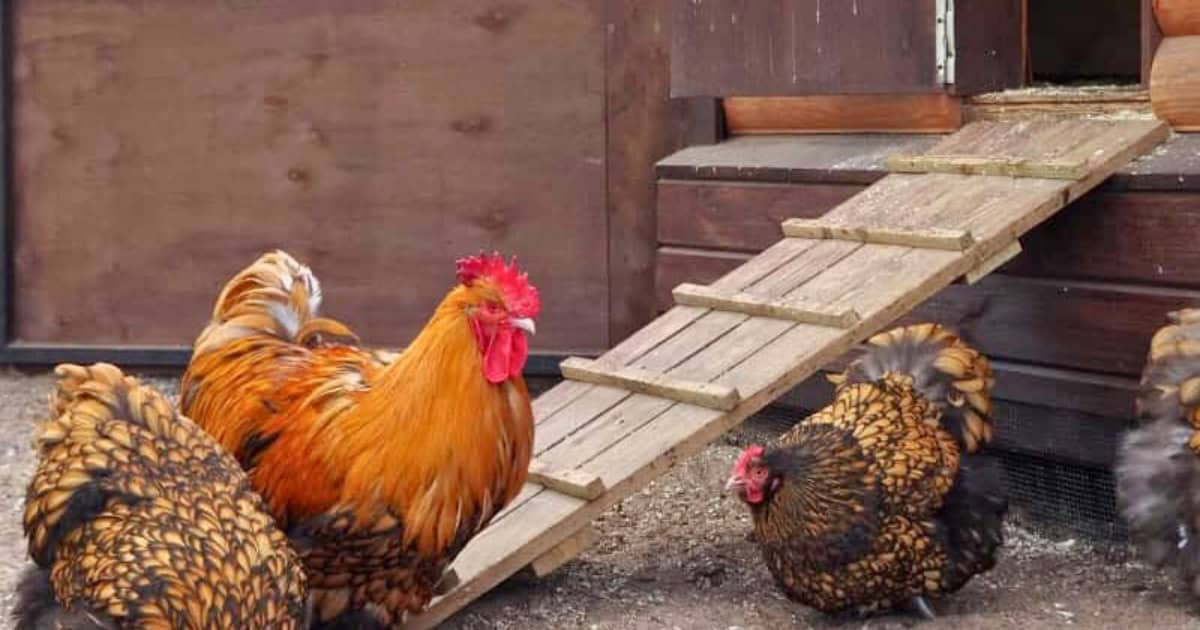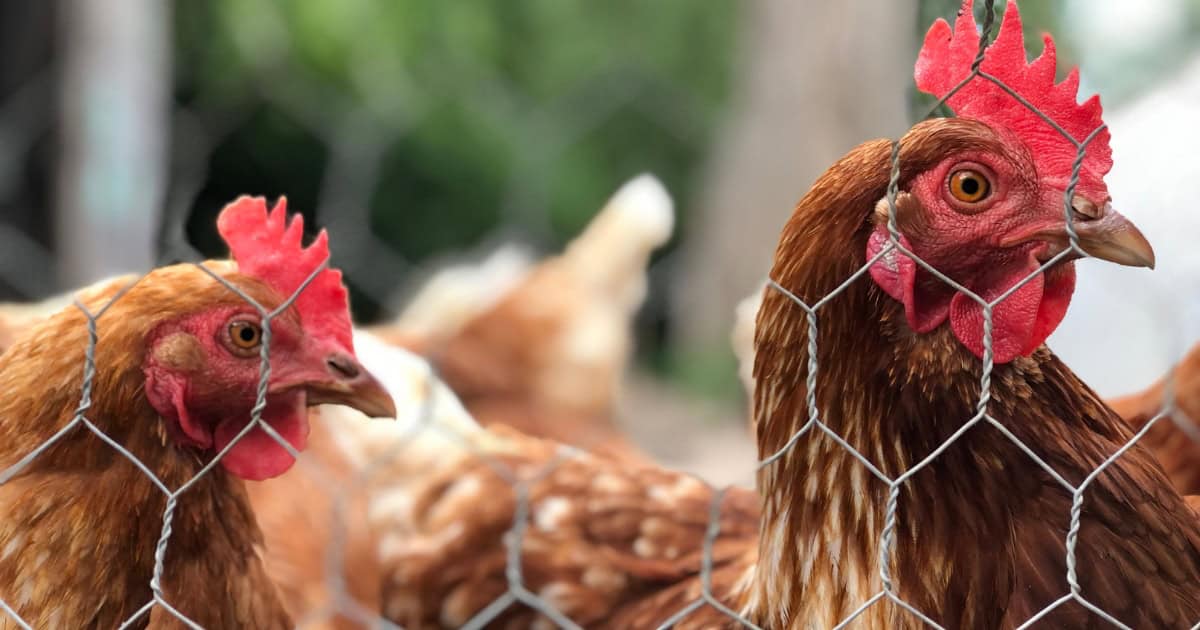If you’ve ever found yourself chasing your chooks back into their coop, then this guide on how to get chickens back in coop is for you!
Whether they’ve wandered off during free-range time or simply decided to rebel against bedtime, getting your chickens back into their coop can be a tricky task. But fear not!
In this comprehensive blog, we’ll walk you through practical tips and training methods to make the process smooth and stress-free, ensuring your flock returns safely to their coop every night.
Understanding Chicken Behaviour for Effective Coop Return
Chickens, like many animals, are creatures of habit, and their behaviour is deeply influenced by their environment and daily routines. Understanding their behaviour is key to encouraging them to return home as dusk falls.
Common Reasons Chickens Won’t Go Back In Their Coop
Common reasons chickens may not go back into their coop include:
Lack of routine:
Chickens thrive on routine, any disruptions to their usual free-ranging or bedtime routine may cause them to hesitate to return to the coop. This is usually the most common reason chickens won’t return to their coop.
New environment:
Chickens may not return to their coop if they haven’t yet learned to recognize it as their home, often leading to confusion or reluctance to go back.
Training chickens to recognise their coop involves keeping them in their coop for about a week before letting them out to free range.
Social dynamics:
Conflicts within the flock or bullying issues from dominant birds can sometimes prevent certain chickens from accessing the coop.
Environmental factors:
Extreme weather conditions, such as heavy rain or strong winds, can deter chickens from returning to the coop. They may seek shelter in alternative locations, such as under bushes or trees, rather than returning to the coop.
Coop Comfort:
If a chicken finds its coop unsuitable for its needs, such as lacking space or features like nest boxes and roosting poles, it may be reluctant to return.
Ensure the coop has adequate ventilation to keep the coop warm in winter and cooler in summer. Providing a coop that meets their requirements encourages chickens to return willingly.
Learn more about ‘How Much Space Does a Chicken Need’.
Understanding these common reasons can help chicken owners address any issues and encourage their flock to return to the coop more easily.

Practical Techniques Of How To Get Chickens Back In Coop
Getting your chickens back into their coop doesn’t have to be a daily struggle. With the right approach, you can turn this task into a simple routine.
Teach Them Where Home Is
When introducing new chickens to their coop, keep your chickens in the coop for a week to help them recognise it as their home. Ensure they do not escape when opening the door to provide food and water.
After a week, open the coop door in the late afternoon and let the chickens explore at their own pace. As dusk approaches, watch them naturally return to the coop as they recognise the safety of their home.
Utilise Food as Motivation
Chickens love food and using treats to guide them back can be quite effective. Try scattering some chicken feed inside the coop or leading a trail up to it around dusk when they start looking for a place to settle down for the night.
To make this technique more effective, offer treats that they don’t get during other times of the day. High-protein snacks like mealworms or kitchen scraps can serve as an excellent motivator for them to head back home.
Create Routine
Chickens are creatures of habit and naturally seek safety as daylight fades, driven by their instinct to avoid predators. Start by establishing a feeding schedule that aligns with their return time. Gradually, they’ll associate returning to the coop with mealtime, making it easier for you.
Another method often overlooked to train chickens involves using gentle auditory cues such as specific sounds like ringing a dinner bell, shaking a jar of treats or using a gathering call such as ‘Here girls!’ routinely before feeding time inside the coop, conditioning them over time to associate these sounds with food.
Our guide ‘Can Chickens Be Trained? Tips for Teaching Your Flock’ has some handy tips on recall training.
Leave The Coop Door Open
It might seem obvious, but leaving the coop door open during the day will help encourage chickens to return to their coop voluntarily, providing them with a familiar and accessible shelter whenever they feel the need for safety or rest.
Use Light
If it’s getting dark and your chickens are still out, turn on a light near the coop entrance. A well-lit path leading up to it during twilight hours helps as chickens have poor night vision but are attracted by light as darkness falls.
Create a Welcoming Environment
A well-designed chicken coop and run not only makes your life easier but also makes your chickens feel comfortable and happy, encouraging them to return each evening.
Chickens need space in their coop area to roam, forage, and express natural behaviours. When chickens are packed too tightly, it can spark stress, cause them to peck at each other more, and even decrease the number of eggs they lay.
The bedding should be clean and cosy, offering them warmth at night.
Incorporating coop fittings such as perches will not only provide sleeping spots but also satisfy their natural roosting instincts — another lure toward bedtime compliance.
Make The Coop Predator Proof
A predator-proof coop acts like a safe haven for chickens, giving them a sense of security and peace of mind knowing they’re protected from danger.
With this reassurance, they feel more inclined to return to their cosy coop, just like how we humans feel drawn to the safety of our homes.
Some effective ways to ensure their coop is safe are to have an inside area with a closing door, protection over the top of the coop and wire on the coop floor to prevent predators from digging in.

Designing a Chicken-Friendly Coop and Run
Creating a cosy home for our feathered friends involves understanding their needs and making their environment both practical and inviting. Chicken coops are their safe haven, protecting them from weather and predators while giving them room to roost and nest comfortably.
Incorporating natural light and adequate ventilation ensures a healthy living environment, while easy-to-clean surfaces promote hygiene. Additionally, implementing features such as perches, nesting boxes, and access ramps meet chickens’ behavioural preferences, promoting their well-being and productivity.
A well-designed outdoor run is just as important. It should offer sufficient space for exercise, foraging, and dust bathing. Make sure it is predator-proof from birds of prey by having protection over the top of the run, as well as some shade and shelter from extreme weather conditions.
Check out our guide on Chicken Coop’s For Beginners for more detailed information.
Toni’s Wrap
Training your chickens to go back into their coop takes patience and understanding of their needs. By establishing routines, creating a welcoming coop environment, and addressing any potential stressors, you can successfully guide your flock back to their coop.
These are the foundations of how to get chickens back in coop effortlessly. Remember to stay patient and observant, adapting your approach as needed to ensure a smooth transition.




